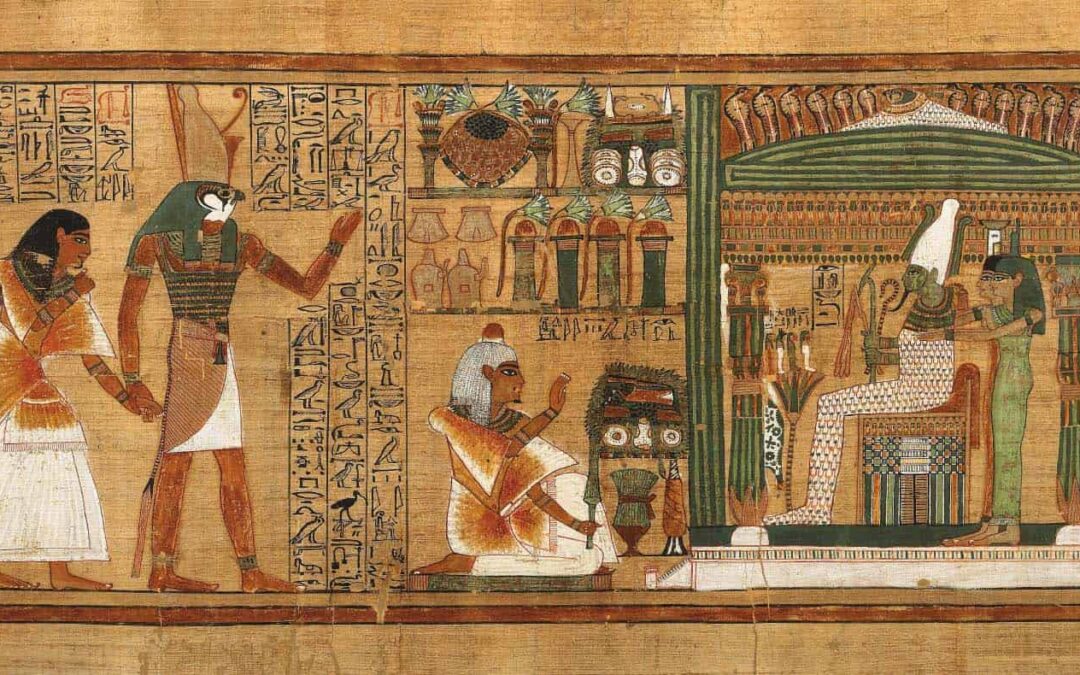The ancient Egyptians held beliefs that are likely to astonish you, such as their notion that the universe originated from an immense ocean and that humans were created from the tears of the Sun God. Learn more about the intriguing convictions of this remarkable civilization.
When we delve into the topic of Ancient Egypt, we are referring to the civilization that flourished approximately 4,000 years ago in Northeast Africa, along the banks of the Nile River. Its numerous accomplishments, preserved through art, monuments, and science, continue to captivate our imagination, with the allure intensifying as contemporary findings unveil its enigmatic traits.
While much of this civilization remains shrouded in mystery, certain primarily religious facets that governed life in Ancient Egypt are already widely recognized. This is due to the wealth of documents uncovered by historians and archaeologists, such as the Book of the Dead, which recount the religion, myths, and beliefs of the ancient Egyptians.
1- The Myth of Creation
As per the American Center for Research in Egypt (ARCE), ancient Egyptian mythology narrates that prior to creation, only darkness enveloped an immense primordial ocean known as Nun.
When the breath of life was robust and prepared, the entity Atum determined it was time to commence creation. Consequently, an island emerged from the waters to provide a foundation for this deity, who revealed himself in the guise of Ra, the Sun god of Egypt.
Upon a newly formed hill, which would eventually become the ancient city of Iwn (later referred to as Heliopolis by the Greeks), Ra fashioned the first gods from his own being.
Subsequently, the god Shu (representing dryness and air) and his counterpart Tefnut (goddess of moisture) were begotten by him, giving rise to the atmosphere.
These deities then gave birth to additional gods, culminating in the Egyptian Cosmos: Geb, the god of Earth, and Nut, the goddess of the Sky, finalizing the shaping of the world.
From Earth and Sky, the Principles of Life emerged, comprising the gods Osiris – the flawless entity destined to govern the remainder of the world – Isis (the mother of all pharaohs), Set (deity of storms, chaos, and war), and Nephthys (often depicted as the goddess of the hearth and guardian of the deceased).
Conversely, humans originated from the tears shed by Ra, populating the world.
2- The Myth of Osiris
According to Maple, ancient Egyptian mythology recounts that Osiris assumed rulership of the world after Ra. For many years, he served as a benevolent and wise leader, instructing humans in agriculture and civilization, always with the assistance of his sister and wife, Isis, who contributed creativity and magic to his efforts.
Osiris‘s position and prestige evoked jealousy in his undisciplined brother, Set. Set’s envy grew to such an extent that he murdered Osiris, aiming to seize the throne and govern ancient Egypt according to his own desires.
Yet, utilizing her magical prowess, Isis managed to resurrect Osiris, who returned to life temporarily, during which he impregnated the goddess. Subsequently, as ancient Egyptian mythology narrates, Osiris journeyed to the afterlife to preside over the realm of the deceased.
From the union of Isis and Osiris emerged the god Horus, who would mature with the purpose of avenging his father’s death and reclaiming the throne of Egypt.
3- The Myth of Horus and Set
Horus, a deity within the ancient Egyptian pantheon, assumed the form of a falcon. However, the most renowned myth involving this god depicts his battle against Set for dominion over the Egyptian throne.
Ancient Egyptian mythology recounts that Horus and Set amassed formidable armies for their conflict, which led to years of bloody confrontations. In their ultimate encounter, Horus confronted Set amidst his forces and launched an attack. Set attempted to evade, yet he could not elude Horus’s assault, resulting in the gouging out of Horus’s eye during the skirmish.
Moved by sympathy for Horus, Hathor, the goddess of the heavens, women, fertility, and love, restored Horus’s eye. This act transformed the eye into a symbol of completeness and recuperation. As a consequence, the Eye of Horus symbol gained frequent usage as an amulet for protection, well-being, and restoration.






